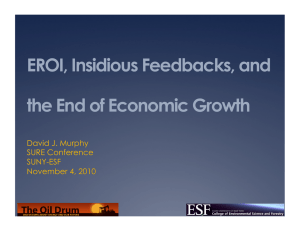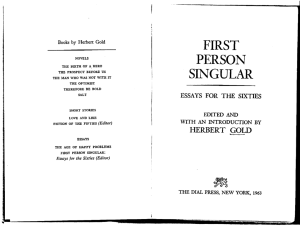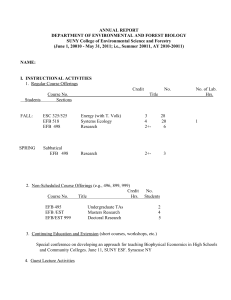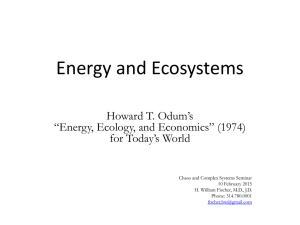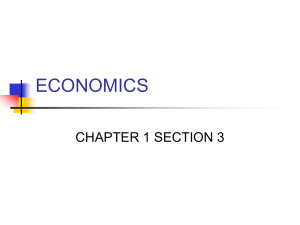Grand Vision Energy Group
advertisement
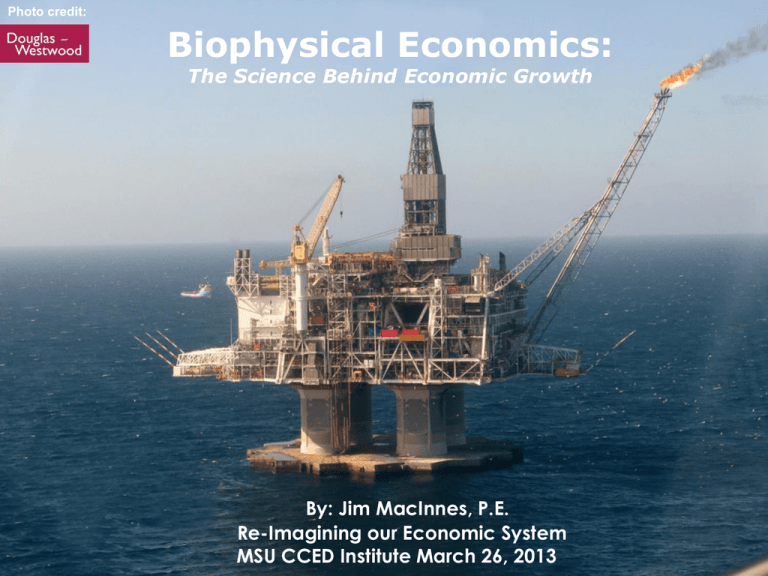
Photo credit: Biophysical Economics: The Science Behind Economic Growth By: Jim MacInnes, P.E. Re-Imagining our Economic System MSU CCED Institute March 26, 2013 WHAT IS REAL ECONOMIC WEALTH? • Money can be printed, and created with the stroke of a pen… or with a keystroke. • Money and even gold has little or no intrinsic value. So, while money is a ‘marker’ for economic wealth, it is not real economic wealth. In 1926 Nobel Laureate, Fredrick Soddy, wrote the book Wealth, Virtual Wealth and Debt, and argued that true economic wealth is: 1. the ability to control the flows of useful energy 2. embodied energy • The Biophysical Economy – Reprinted with the permission of SUNY ESF Systems Ecologist, Charles A. S. Hall The Biophysical Economy – Reprinted with the permission of SUNY ESF Systems Ecologist, Charles A. S. Hall Energy Conservation and the First Law of Thermodynamics • Thermodynamics is a natural law that deals with the relationship between heat, work and energy • The First Law of Thermodynamics is about conservation of energy. Energy can be changed from one form to another, however, it cannot be created or destroyed. • Total Energy of a System = Work done + Waste Heat • In its simplest form: • Work = Force x Distance If we want to make something, or transport people and/or freight we must consume useful (concentrated) energy. Entropy and the Second Law of Thermodynamics • Not only must we consume energy to make things, but we must also consume energy to keep them in good repair. • The second law of thermodynamics is often called Entropy, and is an important law of nature that says everything changes over time to a higher state of disorder. • Absent energy inputs, nature’s equilibrium is disorder. • In business, Entropy is accounted for as “depreciation expense” and we must invest “CAPEX” to keep things maintained. • Global Warming represents the entropy bill for our fossil fuel powered industrial revolution. “Weather-related Events on the rise” Reprinted from Traverse City Record Eagle November 18, 2012 Disasters with at least $1 billion in damage for the period 1980 – 2011 Energy return on energy invested (EROI) Energy returned to society (100 barrels of oil) EROI = ------------------------------------------------------------------------- Energy required to get that Energy (1 barrel of oil) = 100 EROI and Net Energy diagram for building, operating and decommissioning a power-generating project. Reprinted with the permission of Ida Kubiszewski and Cutler J. Cleveland, The Encyclopedia of Earth. EROI of various electric power generators. Reprinted with the permission of Ida Kubiszewski and Cutler J. Cleveland, The Encyclopedia of Earth. - EROI for other energy sources: oil and gas at 11–18 to 1; cornbased ethanol at 0.8 –1.6 to 1; and, biodiesel at 1-3 to 1. Reprinted with the permission of Charles A. S. Hall Reprinted with the permission of Charles A. S. Hall Reprinted with the permission of David Murphy and Charles A. S. Hall Energy consumption used to do “Work” causes economic growth, not the converse Energy is a limiting factor for economic growth. “Best First” principle (low hanging fruit) and history of diminishing EROI Where could we get more energy to power economic growth? Increase the energy available from fossil fuels, nuclear, wind, solar, etc. Conserve energy by not doing something and redirect the energy savings to other more productive uses. Invest in Energy Efficiency where we can do the same job using less which releases energy for other more productive uses Emerging, non-OECD, economies can afford to pay more for an incremental barrel of oil (wealth) because it offers more incremental benefit (utility) VW’s aero car for China: Gas tank: 1.7 gallons Speed: 75 mph Mileage: 258 mpg Selling price: US $600 Rate of Change in Global Petroleum production Annual Rate of Change (all petroleum liquids) 60% 50% 40% 30% 20% 10% 0% 1850 1860 1870 1880 1890 1900 1910 1920 1930 1940 1950 1960 1970 1980 1990 2000 2010 -10% -20% -30% Rate of Change (all liquids) Linear (Rate of Change (all liquids)) The Evidence: Declining Growth Rate of US GDP 20% Annual percent change 15% 10% 5% -10% -15% Gross domestic product Linear (Gross domestic product) 2010 2005 2000 1995 1990 1985 1980 1975 1970 1965 1960 1955 1950 1945 1940 -5% 1935 0% The Energy Trap •The market will demand a new energy infrastructure based on non-fossil fuel solutions. •The construction of that new infrastructure requires not just money, but…energy. And that’s the very commodity in short supply. •Are we willing, in the short term, to sacrifice additional FF energy consumption to build a new renewable energy infrastructure – effectively steepening the decline – in order to invest in a long-term energy plan? Reprinted with permission of UCSD Physics Prof. Tom Murphy
